第21章 CHAPTER III--VOLCANOS(6)
And then, through ashes and cinders, the melted lava burrows out, twisting and twirling like an enormous fiery earth-worm, till it gets to the air outside, and runs off down the mountain in a stream of fire. And so you may see (as are to be seen on Vesuvius now) two eruptions at once--one of burning stones above, and one of melted lava below.
And what is lava?
That, I think, I must tell you another time. For when I speak of it I shall have to tell you more about Madam How, and her ways of making the ground on which you stand, than I can say just now.
But if you want to know (as I dare say you do) what the eruption of a volcano is like, you may read what follows. I did not see it happen; for I never had the good fortune of seeing a mountain burning, though I have seen many and many a one which has been burnt--extinct volcanos, as they are called.
The man who saw it--a very good friend of mine, and a very good man of science also--went last year to see an eruption on Vesuvius, not from the main crater, but from a small one which had risen up suddenly on the outside of it; and he gave me leave (when I told him that I was writing for children) to tell them what he saw.
This new cone, he said, was about 200 feet high, and perhaps 80 or 100 feet across at the top. And as he stood below it (it was not safe to go up it) smoke rolled up from its top, "rosy pink below," from the glare of the caldron, and above "faint greenish or blueish silver of indescribable beauty, from the light of the moon." But more--By good chance, the cone began to send out, not smoke only, but brilliant burning stones. "Each explosion," he says, "was like a vast girandole of rockets, with a noise (such as rockets would make) like the waves on a beach, or the wind blowing through shrouds. The mountain was trembling the whole time. So it went on for two hours and more; sometimes eight or ten explosions in a minute, and more than 1000 stones in each, some as large as two bricks end to end. The largest ones mostly fell back into the crater; but the smaller ones being thrown higher, and more acted on by the wind, fell in immense numbers on the leeward slope of the cone" (of course, making it bigger and bigger, as I have explained already to you), and of course, as they were intensely hot and bright, making the cone look as if it too was red-hot. But it was not so, he says, really. The colour of the stones was rather "golden, and they spotted the black cone over with their golden showers, the smaller ones stopping still, the bigger ones rolling down, and jumping along just like hares." "A wonderful pedestal," he says, "for the explosion which surmounted it." How high the stones flew up he could not tell. "There was generally one which went much higher than the rest, and pierced upwards towards the moon, who looked calmly down, mocking such vain attempts to reach her." The large stones, of course, did not rise so high; and some, he says, "only just appeared over the rim of the cone, above which they came floating leisurely up, to show their brilliant forms and intense white light for an instant, and then subside again."
Try and picture that to yourselves, remembering that this was only a little side eruption, of no more importance to the whole mountain than the fall of a slate off the roof is of importance to the whole house. And then think how mean and weak man's fireworks, and even man's heaviest artillery, are compared with the terrible beauty and terrible strength of Madam How's artillery underneath our feet.
Now look at this figure. It represents a section of a volcano; that is, one cut in half to show you the inside. A is the cone of cinders. B, the black line up through the middle, is the funnel, or crack, through which steam, ashes, lava, and everything else rises. C is the crater mouth. D D D, which looks broken, are the old rocks which the steam heaved up and burst before it could get out. And what are the black lines across, marked E E E? They are the streams of lava which have burrowed out, some covered up again in cinders, some lying bare in the open air, some still inside the cone, bracing it together, holding it up. Something like this is the inside of a volcano.